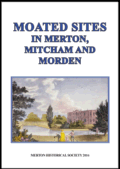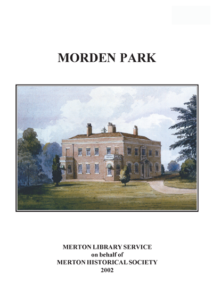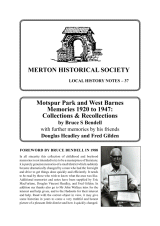Publications
Morden digital classics
A volume on The Registers of Morden, Surrey, 1634-1812 by F Clayton , published in 1901, is available from Internet Archive. It includes transcripts of inscriptions inside the church and in the churchyard, together with a brief historical introduction (though his attribution of the gift of the manor of Morden to Westminster Abbey by Prince Ethelstan is mistaken – the gift was to St Peter’s Winchester and the estate was Steeple Morden in Cambridgeshire).
Morden Hall
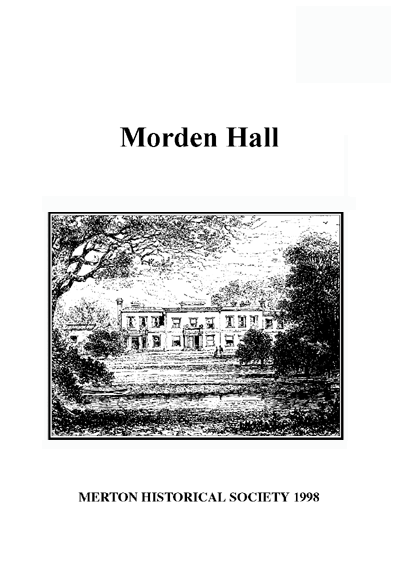
In this booklet Bill Rudd recounts the history over more than 400 years of the building and the two principal families connected with it, the Garths and the Hatfeilds. Illustrated with drawings, maps and a family tree.
Morden in 1838: The Tithe Apportionment Map

The tithe apportionment for Morden, which is the earliest for the four ancient parishes which make up the present London Borough of Merton, dates from 1838. It is also one of the most detailed, covering every property in Morden, and providing field names for almost every field. The map identifies each field and building with a number, and the accompanying schedule also gives the name of the owner and the occupier, its area (in acres, roods and perches), and, in most cases, the use to which it was put.
Morden in 1910: The Land Valuation Records (‘Lloyd George’s Domesday’)

A unique view of Morden just before it was overwhelmed by suburbia. Every property, including building plots, is listed, with details of owner, occupier, leases and rents. Many properties have full descriptions, some with plans. The original maps are missing but Rosemary Turner has reconstructed them and plotted each property onto the 1912 OS map.
Morden Park
A booklet on Morden Park, by former Borough librarian Evelyn Jowett, was published by Merton Historical Society in 1977, but has long been out of print. Since then further information has come to light, not least during the survey undertaken prior to the renovation and conversion of the house for use as Merton’s Register Office. This new edition has been prepared by William Rudd and Peter Hopkins of Merton Historical Society.
More Memories of Manor Road in the 1920s Mitcham
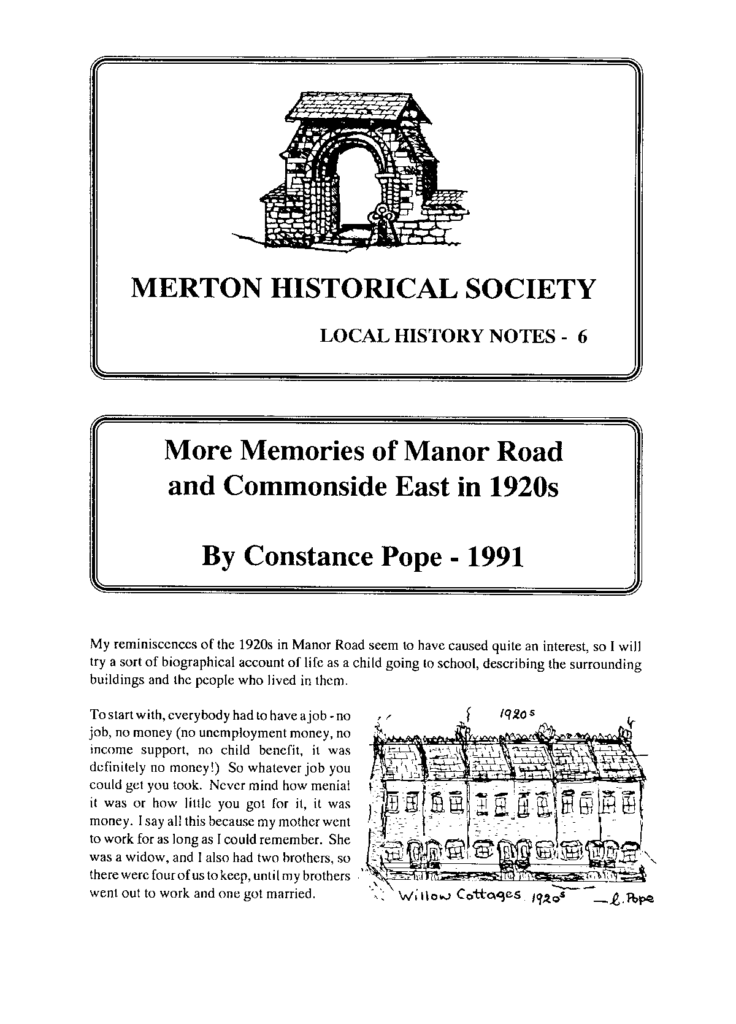
Constance Pope’s reminiscences of the 1920s in Manor Road, published as Local History Notes 2, aroused considerable interest. In this, her second set of recollections, she gives “a sort of biographical account of life as a child going to school, describing the surrounding buildings and the people who lived in them.” Her account is complemented by delightful pen-and-ink sketches of the properties mentioned in the text.
Not Trampled But Walked Over
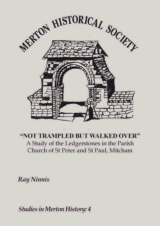
A Study of the Ledgerstones in the Parish Church of St Peter and St Paul, Mitcham
The ledgerstones (inscribed flagstones used to seal graves and vaults) in Mitcham parish church have been concealed under the carpeted floor since 1991. Fortunately Ray had photographed many of them, and had copied the inscriptions, shortly before they were covered, and this book reproduces this material, together with biographical notes. This book is a must for local and family historians.
On the Wandle
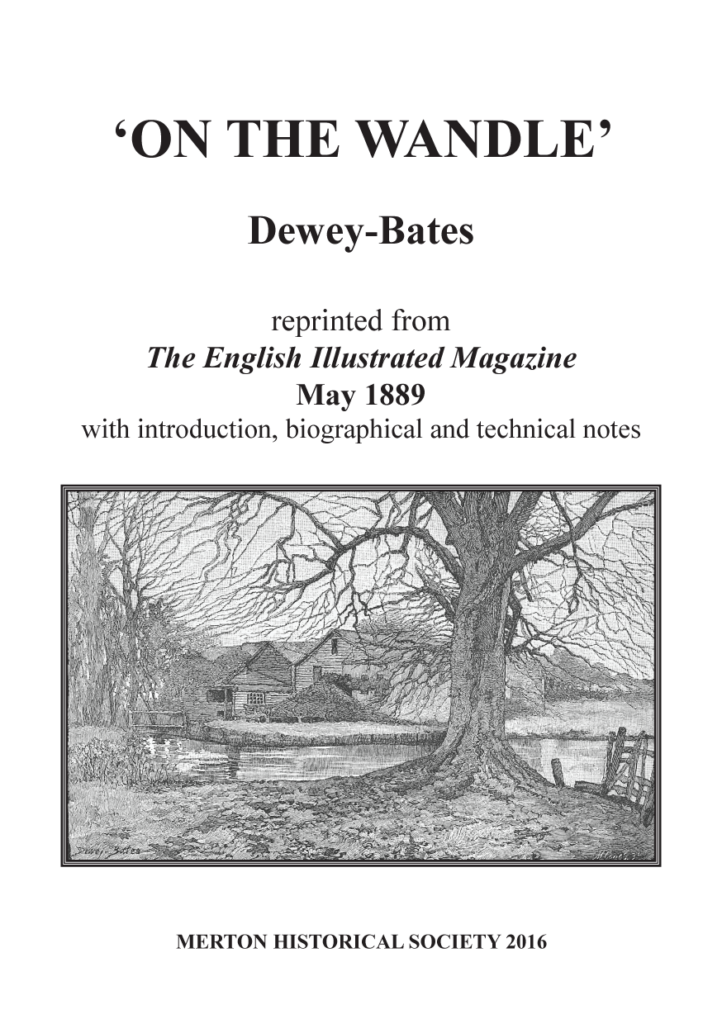
On the Wandle is a reprint from the May 1889 edition of The English Illustrated Magazine of an illustrated article by the American artist Dewey Bates (1851–1898). It also includes extensively researched technical and biographical notes by David and Katharina Haunton.
Once Upon a Time: Recollections of an Edwardian Childhood in Colliers Wood
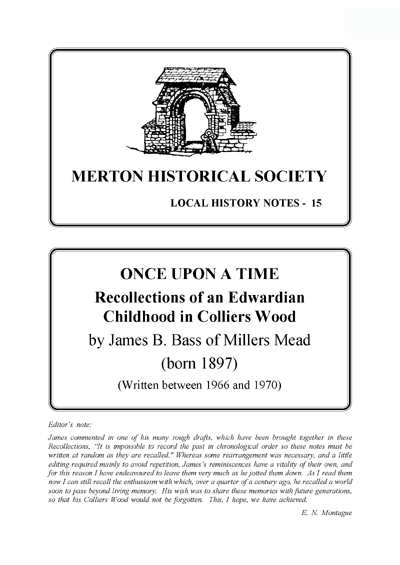
These engaging reminiscences, put on paper between 1966 and 1970, have been edited by Eric Montague. Mr Bass, who was born in 1897, recalled with affection the ‘compact community’ of early 20th-century Colliers Wood, the games, treats and semi-rural pleasures of childhood in the days of horse-buses; the annual highlights of Epsom Week and Sanger’s Circus; and the coming of the electric tram and the cinema.
Other Sources
More local history publications can be obtained from the following addresses:-
OUR CONVICT SON: Harold Brewster 1895-1958: A Merton Objector to Conscription
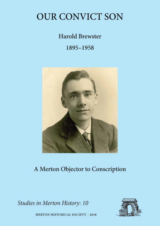 In March and April 1916 Harold Brewster, a surveyor’s assistant employed by Merton and Morden Council, argued his case in front of two tribunals that no earthly court had a right to come between a man and his conscience. His conscientious objection was to the undertaking of all forms of military service. Resisting conscription exposed him to the hostility of the majority of the population and to the penalties, short of death, that military and civil rule could impose.
In March and April 1916 Harold Brewster, a surveyor’s assistant employed by Merton and Morden Council, argued his case in front of two tribunals that no earthly court had a right to come between a man and his conscience. His conscientious objection was to the undertaking of all forms of military service. Resisting conscription exposed him to the hostility of the majority of the population and to the penalties, short of death, that military and civil rule could impose.
In this study, Keith Penny traces the full range of the penalties that young Harold Brewster endured in the name of conscience.
Parishioners of Mitcham 1837/38:
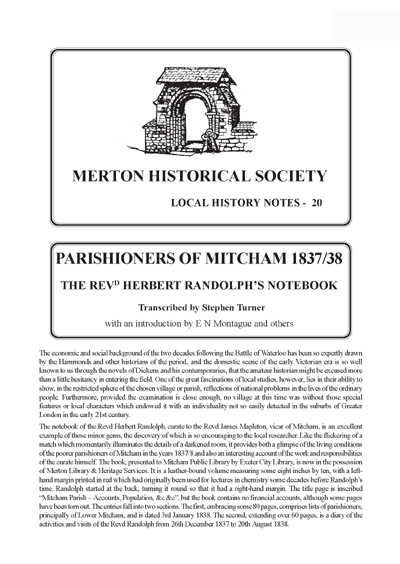
The notebook of the Revd Herbert Randolph, curate to the Revd James Mapleton, vicar of Mitcham, is an excellent example of those minor gems, the discovery of which is so encouraging to the local researcher. Like the flickering of a match which momentarily illuminates the details of a darkened room, it provides both a glimpse of the living conditions of the poorer parishioners of Mitcham in the years 1837/8 and also an interesting account of the work and responsibilities of the curate himself.
The entries fall into two sections. The first comprises lists of parishioners, principally of Lower Mitcham, and is dated 3rd January 1838. The second is a diary of the activities and visits of the Revd Randolph from 26th December 1837 to 20th August 1838.
Poor Relief in Morden 1750–1834
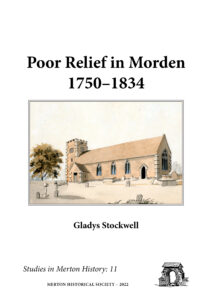 Studies in Merton History 11: by Gladys Stockwell
Studies in Merton History 11: by Gladys Stockwell
A few years ago, Mrs Gladys Bayton offered to the Society her dissertation, undertaken while teacher training in the early 1960s, on the efficiency of the poor relief administration in Morden, using the documents then in the parish chest at St Lawrence Church, Morden.
pub test
Pub test 2
Publications
The Society has some 60 titles in its current Publications List.
Ravensbury: a poem written after a visit in 1850, recollecting childhood memories of people, places and events
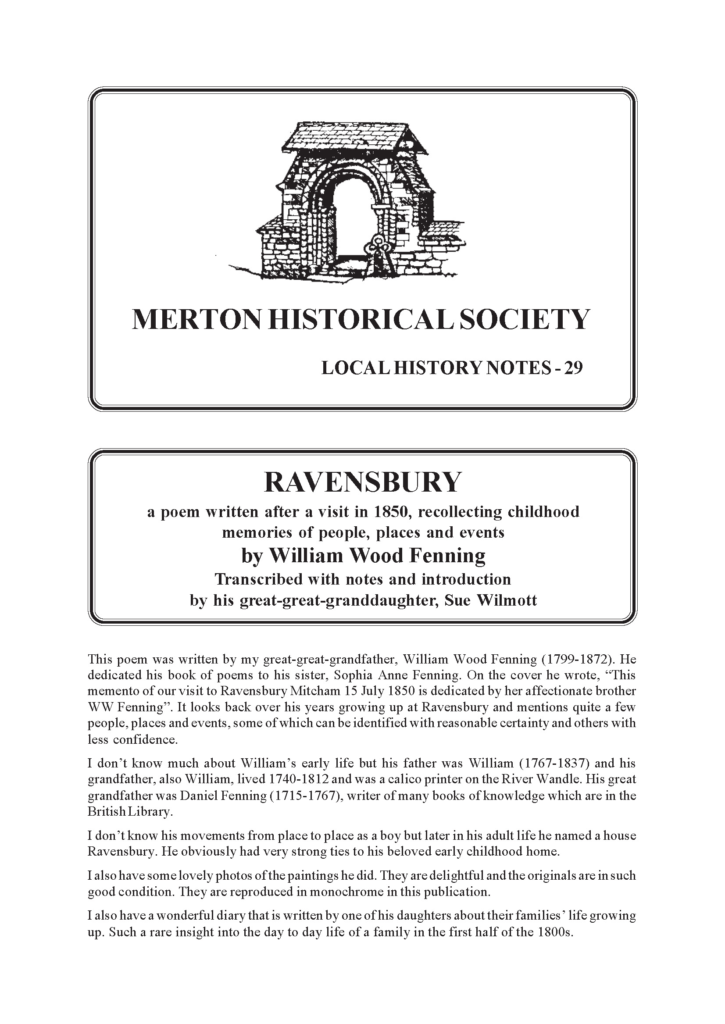
Sue Wilmott’s great-great-great-greatgrandfather, William Fenning, and his son, also William, were proprietors of the Ravensbury Printworks at the end of the 18th and in the early 19th centuries. Sue’s great-great-grandfather, William Wood Fenning, revisited Ravensbury in July 1850, probably for the funeral of his sister, and wrote a long poem looking back over his years growing up at Ravensbury and mentioning quite a few people, places and events. Sue has transcribed the poem, and added explanatory notes. Illustrated with monochrome copies of William Wood Fenning’s watercolours of the area, this booklet adds considerably to our understanding of our locality at this time.
Recruitment to the Armed Forces in Mitcham 1522-1815
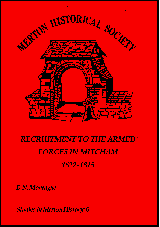
In this study Eric Montague looks at the impact of war and the threat of invasion on Mitcham over a period of 300 years, with particular emphasis on recruitment to the militia. The text is in four chapters, covering the Tudor period, the Stuarts and the Commonwealth, the eighteenth century and, much the longest, the Napoleonic Wars. Eric has used primary sources where they exist, and the booklet includes among its many illustrations reproductions of a variety of documents.
 MERTON HISTORICAL SOCIETY
MERTON HISTORICAL SOCIETY 